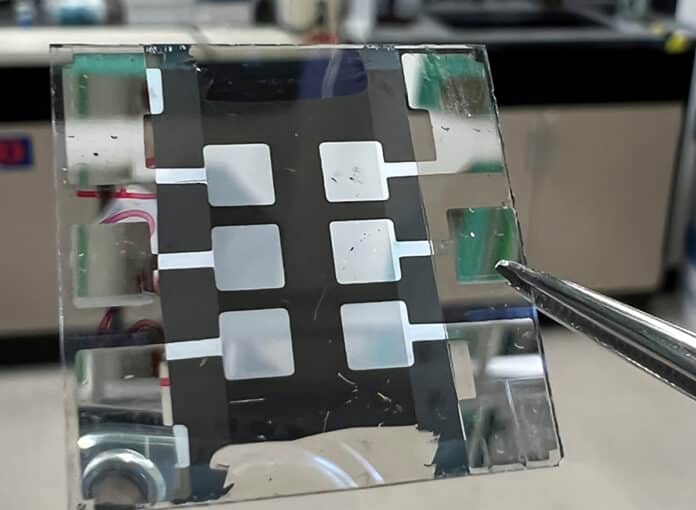Perovskite has emerged in the last decade as an impressive means to efficiently capture sunlight and convert it to electricity. Research into perovskite solar cells has been focused to a large degree on how to increase their stability.
“Some people can demonstrate perovskites with high stability, but efficiency is lower,” said Zhu, a senior scientist in the Chemistry and Nanoscience Center at NREL. “You ought to have high efficiency and high stability simultaneously. That’s challenging.”
Researchers at the U.S. Department of Energy’s (DOE’s) National Renewable Energy Laboratory (NREL) made a technological breakthrough and constructed a perovskite solar cell with the dual benefits of being both highly efficient and highly stable. They come up with the idea of using inverse perovskite architecture to produce perovskite solar cells that can efficiently capture sunlight and convert it into electricity with enormous stability.
The work was done in collaboration with scientists from the University of Toledo, the University of Colorado – Boulder, and the University of California – San Diego.
Perovskite solar cells with an inverted structure are attractive for future commercialization due to their easily scalable fabrication, reliable operation, and compatibility with a wide range of perovskite-based tandem device architectures. However, the power conversion efficiency of these PSCs falls behind normal structure counterparts.
The NREL researchers used an inverted (p-i-n) architecture rather than the normal (n-i-p) architecture that has to date, yielded the highest efficiencies – these two types are differentiated by how the layers are deposited on the glass substrate. The inverted perovskite architecture is known for its high stability and integration into tandem solar cells.
The NREL-led team also added a new molecule, 3-(Aminomethyl) pyridine (3-APy), to the surface of the perovskite thin film. The molecule reacted to the formamidinium within the perovskite to create an electric field on the surface of the perovskite layer.
First, the 3-APy molecule selectively reacts with surface FA+, reducing perovskite surface roughness and surface potential fluctuations associated with surface steps/terraces. Second, the reaction product on the perovskite surface decreases the formation energy of charged iodine-vacancies, leading to effective n-type doping with a reduced work function in the surface region. According to researchers, this gave them a huge boost in terms of not only efficiency but also stability.
A unique architectural structure enabled the researchers to record a certified stabilized efficiency of 24% under 1-sun illumination, making it the highest reported of its kind. The highly efficient cell also retained 87% of its original efficiency after 2,400 hours of operation at 55 degrees Celcius in the air. Researchers also noted that reactive surface engineering stands out as an effective approach to significantly enhance the performance of inverted cells “to new state-of-the-art levels of efficiency and operational reliability.”
Journal Reference:
- Jiang, Q., Tong, J., Xian, Y. et al. Surface reaction for efficient and stable inverted perovskite solar cells. Nature (2022). DOI: 10.1038/s41586-022-05268-x
